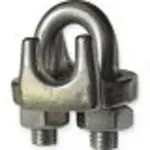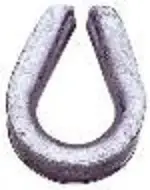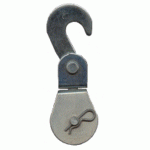Klondikeike
Full Member
Klondike here...
I recently posted about an area near Los Angeles in Azusa, CA....Easy Fork of the San Gabriel River...
I also used to go to Pirue Creek rather often,... north of LA... off I-5 in the Tehachapi Mountains....(It is said the Spanish use the gold from the Pirue Creek area to help finance some of the missions they built...just a few days before the great gold rush of 1849...lol)....it's about 15 to 20 miles back in off the free way...used to be a good 2 wheel drive road... don't know what it is like today... it's been 30 or more years since going there.... The last time I was in there ..I was forced to leave due to a wild and large forest fire that started the day I arrived... We got out the next day with flames leaping over my truck about 2 miles from the free way..I-5....it was interesting to say the least...
In both places, the good or better quantity of gold is not at the rivers edge, but is in the high benches...and while carrying buckets to and fro will accomplish you getting some gold.. it is back breaking work....
Here is a way I came up with to work these areas...it's still hard work.. but a bit easier, not by much.. but you will move more material...and more material moved usually means more gold...
So I would find 2 good sized trees in or near the area I wanted to work and prospect...(I would usually only do this after a few pans had showed there was some reasonable sign of gold ..) and string a 3/8 steel cable between them... securing the down hill cable around a tree or good sized tree limb with 3 or more cable clamps at every cable end....(see pic below)...and secure the up hill cable with cable clamps and leaving a loop of cable to attach a come-a-long to... taking a smaller length of cable... and securing it with several cable clamps...around the up hill tree, leaving a loop of cable to attach the other end of the come-a-long....and tighten the cable by shortening the come-a-long until I felt the cable was tight enough..... after using this for a while, when the cable stretches some... just tighten the come-a-long a couple of clicks to re-tighten the cable...Be sure to insert a cable loop protector or THIMBLE so the come-a-long will attach resting against the steel cable THIMBLE .and not directly to the cable as it may break the cable without the protector in place....The thimble looks like a longer "tear drop".. with a grove on the outside sized for the size of cable you are using and in which the cable ride in...see pic below...
Also be sure to slide or cable BLOCK with hook...(see pic below)...on to the cable between the trees before total assembly.... and then attach a rope to the cable roller clip.... slightly longer than the cable between the trees....
Now fill a bucket, about 1/2 full of screened material... lift it up and hook it to the BLOCK... and allow it to slide down the cable ... holding back the speed with the rope you are holding that is attached to the cable roller clip...and a second person...is waiting for the bucket to arrive... and he/she takes the bucket off the block...and you pull the block back up to the hanging gravel... screen and fill another bucket....and again send it down the cable....over and over until you have exhausted your buckets.... sluice this amount and check for gold.. send all the buckets back up the cable and start over.... you'll be surprised how much material you can move, once you get your working moves and personalities between the two people down pat.... `
To attach the rope to the block... I used a longer center pin... with a longer pin.. this gives you more room to attach a rope to both sides of he block..keeping it somewhat stable and centered as it slides up and down the steel cable...I used a kind of small yoke assembly made of rope with a loop and each end having a small loop that just did fit over the block center pin..with the rope being held in place by the cotter pin at each end of the center pin...so the yoke ends were between the cotter pins and the side wall of the block...then attached the longer rope to the yoke...which each end of the yoke was attached to the block pin...
Be sure to inspect all the working parts throughout the day and from use to use.. making sure to replace anything worn.. a buck full of dirt..free falling some distance if something broke could hurt someone walking near by or damage a near by car... just use common sense and good judgement...
Good luck to all... and lets hear about some inventive ways you other prospectors have come up with to mine or prospect without using motor powered equipment as you may encounter such restrictions with the liberal and progressive thinking of some of the folks, like in California and other places...
Klondike...
I recently posted about an area near Los Angeles in Azusa, CA....Easy Fork of the San Gabriel River...
I also used to go to Pirue Creek rather often,... north of LA... off I-5 in the Tehachapi Mountains....(It is said the Spanish use the gold from the Pirue Creek area to help finance some of the missions they built...just a few days before the great gold rush of 1849...lol)....it's about 15 to 20 miles back in off the free way...used to be a good 2 wheel drive road... don't know what it is like today... it's been 30 or more years since going there.... The last time I was in there ..I was forced to leave due to a wild and large forest fire that started the day I arrived... We got out the next day with flames leaping over my truck about 2 miles from the free way..I-5....it was interesting to say the least...
In both places, the good or better quantity of gold is not at the rivers edge, but is in the high benches...and while carrying buckets to and fro will accomplish you getting some gold.. it is back breaking work....
Here is a way I came up with to work these areas...it's still hard work.. but a bit easier, not by much.. but you will move more material...and more material moved usually means more gold...
So I would find 2 good sized trees in or near the area I wanted to work and prospect...(I would usually only do this after a few pans had showed there was some reasonable sign of gold ..) and string a 3/8 steel cable between them... securing the down hill cable around a tree or good sized tree limb with 3 or more cable clamps at every cable end....(see pic below)...and secure the up hill cable with cable clamps and leaving a loop of cable to attach a come-a-long to... taking a smaller length of cable... and securing it with several cable clamps...around the up hill tree, leaving a loop of cable to attach the other end of the come-a-long....and tighten the cable by shortening the come-a-long until I felt the cable was tight enough..... after using this for a while, when the cable stretches some... just tighten the come-a-long a couple of clicks to re-tighten the cable...Be sure to insert a cable loop protector or THIMBLE so the come-a-long will attach resting against the steel cable THIMBLE .and not directly to the cable as it may break the cable without the protector in place....The thimble looks like a longer "tear drop".. with a grove on the outside sized for the size of cable you are using and in which the cable ride in...see pic below...
Also be sure to slide or cable BLOCK with hook...(see pic below)...on to the cable between the trees before total assembly.... and then attach a rope to the cable roller clip.... slightly longer than the cable between the trees....
Now fill a bucket, about 1/2 full of screened material... lift it up and hook it to the BLOCK... and allow it to slide down the cable ... holding back the speed with the rope you are holding that is attached to the cable roller clip...and a second person...is waiting for the bucket to arrive... and he/she takes the bucket off the block...and you pull the block back up to the hanging gravel... screen and fill another bucket....and again send it down the cable....over and over until you have exhausted your buckets.... sluice this amount and check for gold.. send all the buckets back up the cable and start over.... you'll be surprised how much material you can move, once you get your working moves and personalities between the two people down pat.... `
To attach the rope to the block... I used a longer center pin... with a longer pin.. this gives you more room to attach a rope to both sides of he block..keeping it somewhat stable and centered as it slides up and down the steel cable...I used a kind of small yoke assembly made of rope with a loop and each end having a small loop that just did fit over the block center pin..with the rope being held in place by the cotter pin at each end of the center pin...so the yoke ends were between the cotter pins and the side wall of the block...then attached the longer rope to the yoke...which each end of the yoke was attached to the block pin...
Be sure to inspect all the working parts throughout the day and from use to use.. making sure to replace anything worn.. a buck full of dirt..free falling some distance if something broke could hurt someone walking near by or damage a near by car... just use common sense and good judgement...
Good luck to all... and lets hear about some inventive ways you other prospectors have come up with to mine or prospect without using motor powered equipment as you may encounter such restrictions with the liberal and progressive thinking of some of the folks, like in California and other places...
Klondike...
Attachments
Upvote
0






